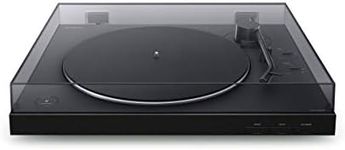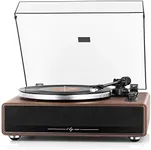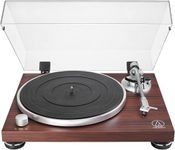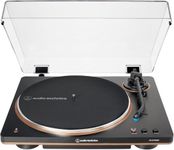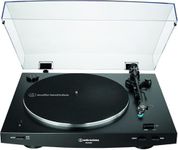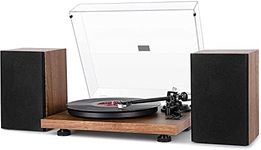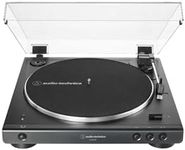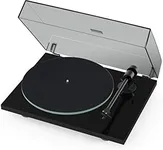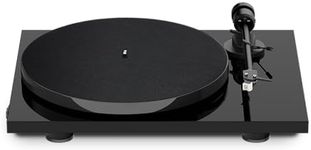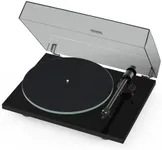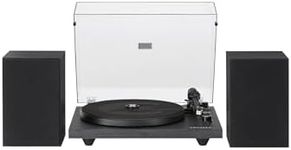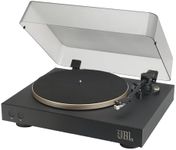Buying Guide for the Best Bluetooth Turntable
When choosing a Bluetooth turntable, it's important to consider how you plan to use it and what features are most important to you. A Bluetooth turntable allows you to enjoy the classic sound of vinyl records with the convenience of wireless connectivity. This means you can easily connect your turntable to Bluetooth speakers or headphones without the need for cables. To find the best fit for your needs, consider the following key specifications and how they align with your listening habits and preferences.Bluetooth VersionThe Bluetooth version of a turntable determines the quality and stability of the wireless connection. Newer versions, like Bluetooth 5.0, offer better range, faster data transfer, and improved audio quality compared to older versions like Bluetooth 4.0. If you plan to use your turntable in a large room or want the best possible audio quality, opt for a model with the latest Bluetooth version. However, if you're using it in a smaller space and are not overly concerned with having the latest tech, an older version may suffice.
Cartridge TypeThe cartridge is the component that holds the needle (stylus) and is responsible for reading the grooves on a vinyl record. There are two main types: moving magnet (MM) and moving coil (MC). MM cartridges are more common, easier to replace, and generally more affordable, making them suitable for most casual listeners. MC cartridges, on the other hand, can offer superior sound quality but are typically more expensive and require more maintenance. If you're an audiophile seeking the best sound, consider an MC cartridge; otherwise, an MM cartridge will likely meet your needs.
Drive TypeTurntables can be either belt-driven or direct-driven. Belt-driven turntables use a belt to spin the platter, which can help reduce motor noise and vibration, making them a popular choice for home listening. Direct-drive turntables have the motor directly attached to the platter, offering more consistent speed and durability, which is preferred by DJs and those who need to frequently start and stop the platter. If you're primarily listening at home, a belt-driven model may be ideal, while a direct-drive model is better suited for DJing or more active use.
Built-in PreampA preamp boosts the audio signal from the turntable to a level that can be processed by speakers or amplifiers. Some turntables come with a built-in preamp, which simplifies setup and allows you to connect directly to powered speakers or a stereo system. If you already have a separate preamp or a receiver with a phono input, you might not need a built-in preamp. However, for ease of use and flexibility, a built-in preamp can be a convenient feature, especially for beginners.
Speed SettingsTurntables typically support different speed settings, such as 33 1/3 RPM, 45 RPM, and sometimes 78 RPM, to accommodate various types of records. Most modern records play at 33 1/3 RPM or 45 RPM, so ensure your turntable supports these speeds. If you have a collection of older 78 RPM records, you'll need a turntable that can handle this speed as well. Consider the types of records you own or plan to purchase when choosing a turntable with the appropriate speed settings.
Build QualityThe build quality of a turntable affects its durability, sound quality, and overall performance. Look for a turntable with a sturdy, well-constructed base to minimize vibrations and ensure stable playback. Materials like metal and high-quality plastics are preferable over lightweight or flimsy materials. If you plan to use your turntable frequently or want it to last for many years, investing in a model with good build quality is essential. Consider how often you'll use the turntable and in what environment to determine the level of build quality you need.
